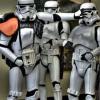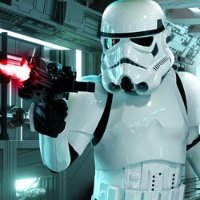Leaderboard
Popular Content
Showing content with the highest reputation on 09/23/2023 in all areas
-
All pictures have been sent off to the DL. Now it lies in the hands of the LMO. Super hyped!2 points
-
That sad moment when you are seeing the light at the end of the tunnel... and you get to start on snaps, only to realize you can't find the die that came with the pliers and have zero idea if you ever saw them. Tomorrows a new day and will run by the store to get snaps started.1 point
-
1 point
-
1 point
-
Yea, my pics are a little out of date. After a couple troops, the edges have gotten dinged up a bit and let the black show through. I think it just gives it character. But I was thinking of adding some dirt/oil weathering from the bottom up, but I'm undecided.1 point
-
1 point
-
Hey Greg, How is the project coming? I bought Nico's files recently and just started printing them. Would love to see how your version is coming along. The raw steps look amazing.1 point
-
I've said it before on your FB post, but again, outstanding work on these precision engineered carry cases Colin. Cant tell you how much I love them and to also have a build thread for them here is something the detachment is well and truly grateful for.1 point
-
On to the armor bin. I wrote up a bit more about this one: Building the Armor Bin: High-level tips on this bin: - There is such a thing as TOO MANY GREEBLIES. Greeblies -those little found objects and things that make a thing look like it has some utilitarian function of some kind. If you cover every spot, it loses something. Star Wars objects look best with areas of flat, and then areas of detail, with asymmetry being key. - I used a lot of fasteners, and getting them one at a time at the hardware store can get expensive. There are almost no Phillips style fasteners in Star Wars, so I needed a non-standard bolt. I found a good kit of small nuts and hex hole bolts that were all M3 size but in many different lengths. This allowed me to not only know every hole was my 1/8" bit but also I could find the perfect length of bolt, to minimize the protruding end INSIDE the bin. I also capped every bolt with a small cap, glued on with E6000, or hot glue on my vents. I really want to avoid any chance of scratching the glossy white armor. - For the wiring, test it all first before mounting, and use quick-connect wire connectors so you can assemble it all and test it, and then take it apart, run them through holes, and hook it all back up. Run any switches to the outside of the bin, so you can roll up to a troop, and then turn them on when people will see them, without having to open it up and do some switches every time (save battery power, and the buttons add to the look). - Roughen with sandpaper all parts before gluing. But also, all greeblies and knobs are also bolted on. I have seen glue fail so many times, and on a bin that gets knocked about, everything should be secured with a bolt if possible. - Because things get stacked on a bin, any greeblies on the lid should be secure, and tough, and not go above the top edge so that things could rest on top of it. The build: It started as a Husky 45 gallon tote. On my very first bin years ago, so much of the spray paint chipped off in that first year. It was like the plastic was resisting the paint. Later as I was washing off some cast parts to prep them for painting, it hit me. Like ALL CAST PLASTIC, bins have a mold-releaser spray residue on them when they come out of the factory. So a super important part of my bin painting process is the wash all parts with warm soapy water before starting. I did this one in the shower (with dish soap), but my bigger husky bin I washed in the driveway, like a car wash. Painting the bin was straight-forward, a few coats of primer, letting it cure for more than a day. So many painting issues, especially in winter, come from not letting the primer fully cure. Then some coats of white glossy paint. I usually do the weathering before the clear coat, but after applying some vinyl decals, in a few spots they started peeling off the paint. Not everywhere, but enough that I didn't want to risk more. I painted them back to white, and then did a satin clear coat to help the paint all stay. I used satin because gloss is really hard to paint weathering on, it has no "tooth", so I did a gloss coat after the weathering. Next I wanted to try and do the light panel thing, so I did that first. I go over it more in my previous posts, but the basic idea is I created a matte black decal using my new vinyl cutter, and applied it to a rectangle of translucent plastic. To get the red, I used a square of 3M self-adhesive brake light repair film behind it. You have to have some black area to cover the overlap, as the red light will "bleed" out a little, and you want to cover that transition. The light is a battery dimmable night-light thing with batteries and two LED strips. I opened it up, took a red wire from the batteries, and soldered in a quick release cord, and soldered the other end to a toggle switch. That way I could cover the dimmer switch (it's in the center) and leave it "on" but the switch is now on the outside of the bin controlling it. I mounted it to an aluminum bar to keep it about 5 mm away from the plastic, so that the light diffused enough to make a more even panel. For the frame, I had been saving a few of these diaper wipe lids that had a cool shape. I trimmed off the lid piece, and the part you see is the bottom, where it has a flat area they glued to the package. For the two small lights, I found these great 8mm indicator lights, basically a 5mm LED light with a metal mount around it, and pre-wired with resistors. I wired them in parallel to the 9v battery and with a toggle switch. After looking at the specs, I figured out the hole size, and had these custom laser-cut aluminum hex plates (with my 1/8" holes) to give them a cooler mount. Their 9v battery case is velcroed into the corner for easy removal to change the batteries. I used a lot of the quick-connect wire connectors to do my circuits, because there were a lot of parts that had to go through the walls of the case, and those allow you to do all of your soldering on a table, and assemble it, rather than try and solder in the case. All of these wires could get smashed and caught, so I found a white two-piece pencil case at a dollar store that was the right size, and made a cover for all of the wiring, held on with acorn nuts and wing nuts so I could remove it without tools to change the batteries. For the vents, I had been looking for years for good small vents for Star Wars projects, and this time, I realized I could just use an on-demand metal cutter site (I used SendCutSend) that I used on another project to cut some custom vents. I made the shapes in Adobe Illustrator like I used for the viny decals, and they came out really good. They have the same 1/8" hole that my bolts all use, and I backed them by the denser Phifertex Plus mesh, glued on the inside with a hot glue gun (and I hot glued over the bolt ends at the same time, so that is another bolt protection solution). I added some greeblies from @Jettsonable which were painted with a sort of hammered finish spray (his last one came as a clean print), so I used filler primer to even it out, and then painted them white. I ended up glueing, but also adding two bolts to them to ensure they stayed put. Other greeblies were some old stereo knobs from a random lot I got from Ebay. Finally, for the trooper look, I had an extra belt piece that I glued to the top with white E6000 (and also bolted, the top flexes a lot). Vinyl decals finished it off. One area where the vinyl peeled off the paint on the lid, I had to cut a new rectangle of ABS, and glue/bolt it on, and apply new lettering (the area with "FISD" and "Imperial property" in Aurebesh). The reason I use the white paintable E6000 is because the seep out spots can be painted with the weathering. For weathering, I did my usual technique of painting with mostly black acrylic, wiping off with a rag, painting in, wiping off with a wet rag, back and forth a few times, until it looks right. Lots of gunk under the edge of the rim where all of those chambers are hard to clean, and less in the open areas. Grime near buttons where fingers touch. Mud spray from the wheels up into their cutouts. Just do it with intention and though for HOW it got dirty. Finally, a glossy clear coat, being sure to tape over all screens, lights, knobs, vents, and buttons to keep the spray from affecting those areas. All in all, I love how it came out, and I had few setbacks. I can't wait to roll up to a troop with this! Parts: Husky 45 Gallon (170.3 L) Latch and Stack Tote with Wheels Battery powered dimmable night light panel. 3M High-Strength Red Lens Repair Film Diaper wipes lid piece (Aiden & Anais, no longer made, but others are similar) M3 hex bolt set white dollar store two-piece pencil case custom Laser Cut aluminum vents Phifertex Plus black mesh Hot Glue white paintable E6000 8mm indicator lights 9v battery case velcro 1/2" wide aluminum bar (1/8") Round Toggle Switches Rustoleum white primer Rustoleum Glossy white spray paint Rustoleum satin clear coat Rustoleum Gloss clear coat Liquitex Basics Acrylic black and raw umber paint Antique stereo knobs from Ebay custom vinyl lettering decals stormtrooper belt plate I made this diagram for someone following my build. My LEDs came pre-resistored, but if yours aren't, you will need to use an Ohm's Law Calculator to determine the different resistors (white and red use different volts). I hope I didn't forget anything, but I am open to answer questions! I look forward to more people making in-universe transport cases!1 point

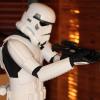
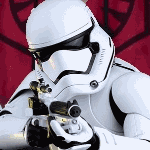
(1)(1)(1).thumb.jpg.9e12048d59bf74ca778a7d26edbed7c9.jpg)

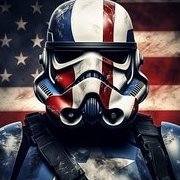
.thumb.jpg.d335f3bf2a71b2806fb80cdb85047b1a.jpg)
.thumb.jpg.a177de4f274afa25439e120e7991df5a.jpg)
